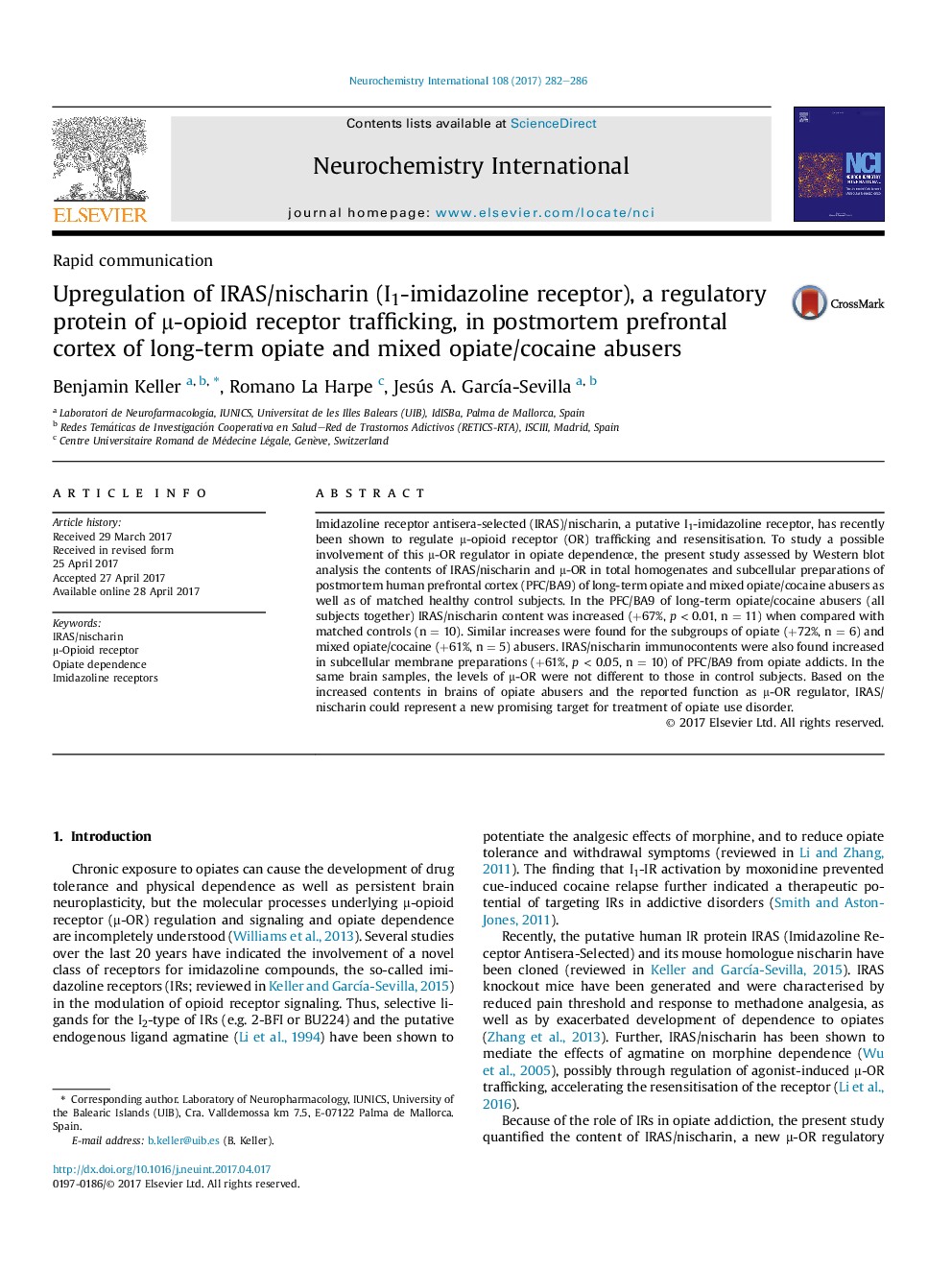| Article ID | Journal | Published Year | Pages | File Type |
|---|---|---|---|---|
| 5534691 | Neurochemistry International | 2017 | 5 Pages |
Abstract
Imidazoline receptor antisera-selected (IRAS)/nischarin, a putative I1-imidazoline receptor, has recently been shown to regulate μ-opioid receptor (OR) trafficking and resensitisation. To study a possible involvement of this μ-OR regulator in opiate dependence, the present study assessed by Western blot analysis the contents of IRAS/nischarin and μ-OR in total homogenates and subcellular preparations of postmortem human prefrontal cortex (PFC/BA9) of long-term opiate and mixed opiate/cocaine abusers as well as of matched healthy control subjects. In the PFC/BA9 of long-term opiate/cocaine abusers (all subjects together) IRAS/nischarin content was increased (+67%, p < 0.01, n = 11) when compared with matched controls (n = 10). Similar increases were found for the subgroups of opiate (+72%, n = 6) and mixed opiate/cocaine (+61%, n = 5) abusers. IRAS/nischarin immunocontents were also found increased in subcellular membrane preparations (+61%, p < 0.05, n = 10) of PFC/BA9 from opiate addicts. In the same brain samples, the levels of μ-OR were not different to those in control subjects. Based on the increased contents in brains of opiate abusers and the reported function as μ-OR regulator, IRAS/nischarin could represent a new promising target for treatment of opiate use disorder.
Related Topics
Life Sciences
Biochemistry, Genetics and Molecular Biology
Cell Biology
Authors
Benjamin Keller, Romano La Harpe, Jesús A. GarcÃa-Sevilla,
